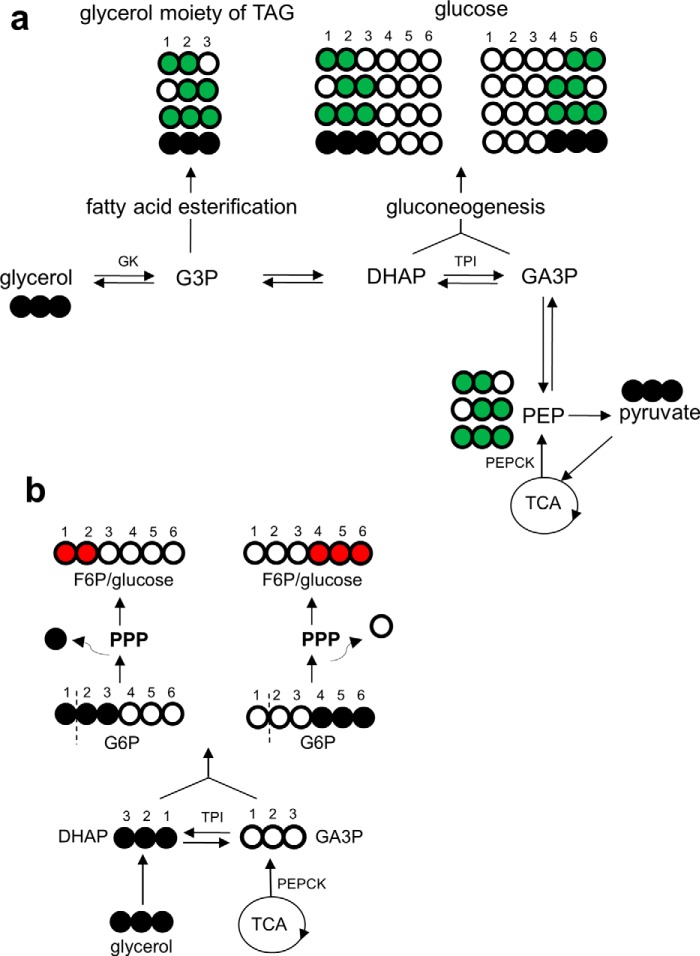FIGURE 1.
13C labeling patterns in TAGs and glucose produced in liver after oral [U-13C3]glycerol. a, [U-13C3]glycerol may be used immediately as backbones for fatty acid esterification or in gluconeogenesis after phosphorylation (“direct” contribution). A fraction of [U-13C3]glycerol may be further converted to other trioses and [U-13C3]pyruvate entering the TCA cycle prior to glyceroneogenesis or gluconeogenesis (“indirect” contribution). The TCA cycle scrambles 13C extensively, labeling all the cycle intermediates, including oxaloacetate, that may exit the cycle producing double- or triple-labeled trioses. These trioses may be either glyceroneogenic or gluconeogenic. Because PEP is a common intermediate for DHAP (becoming glucose carbons 1–3) and GA3P (becoming glucose carbons 4–6), an equivalent 13C-labeling pattern is expected between glucose carbons 1–3 and carbons 4–6. Thus, the ratio [1,2-13C2]/[2,3-13C2] in glucose must be equal to the ratio [5,6-13C2]/[4,5-13C2] in glucose. b, however, PPP activity increases the ratio of [1,2-13C2]/[2,3-13C2], but not [5,6-13C2]/[4,5-13C2], by producing [1,2-13C2]hexose. Gluconeogenesis directly from [U-13C3]glycerol produces [1,2,3-13C3]- or [4,5,6-13C3]hexose. The entry of [1,2,3-13C3]glucose 6-phosphate to PPP produces mainly [1,2-13C2]fructose 6-phosphate through decarboxylation in the oxidative PPP followed by carbon rearrangement in the non-oxidative PPP. In contrast, 13C 3-unit (13C-13C-13C) in [4,5,6-13C3]hexose remains the same even after passing through the PPP. Consequently, the 13C-labeling pattern in glucose carbons 1–3 is sensitive to PPP activity, but the pattern in glucose carbons 4–6 is not. Open circles, 12C; black circles, 13C; green circles, 13C after metabolism through the TCA cycle; red circles, 13C after metabolism through the PPP. F6P, fructose 6-phosphate; G3P, glycerol 3-phosphate; G6P, glucose 6-phosphate; GK, glycerol kinase; PEPCK, PEP carboxykinase; TPI, triose phosphate isomerase.

